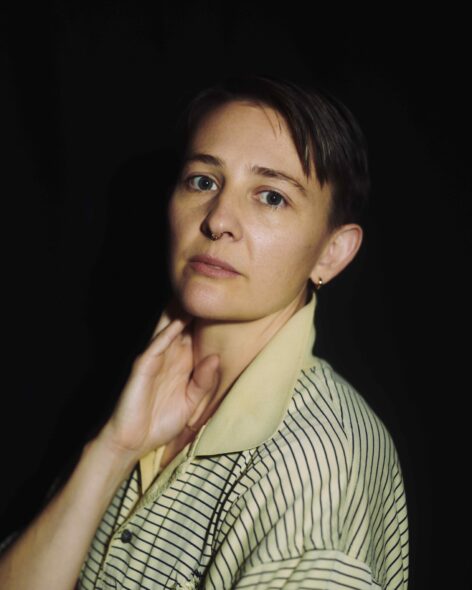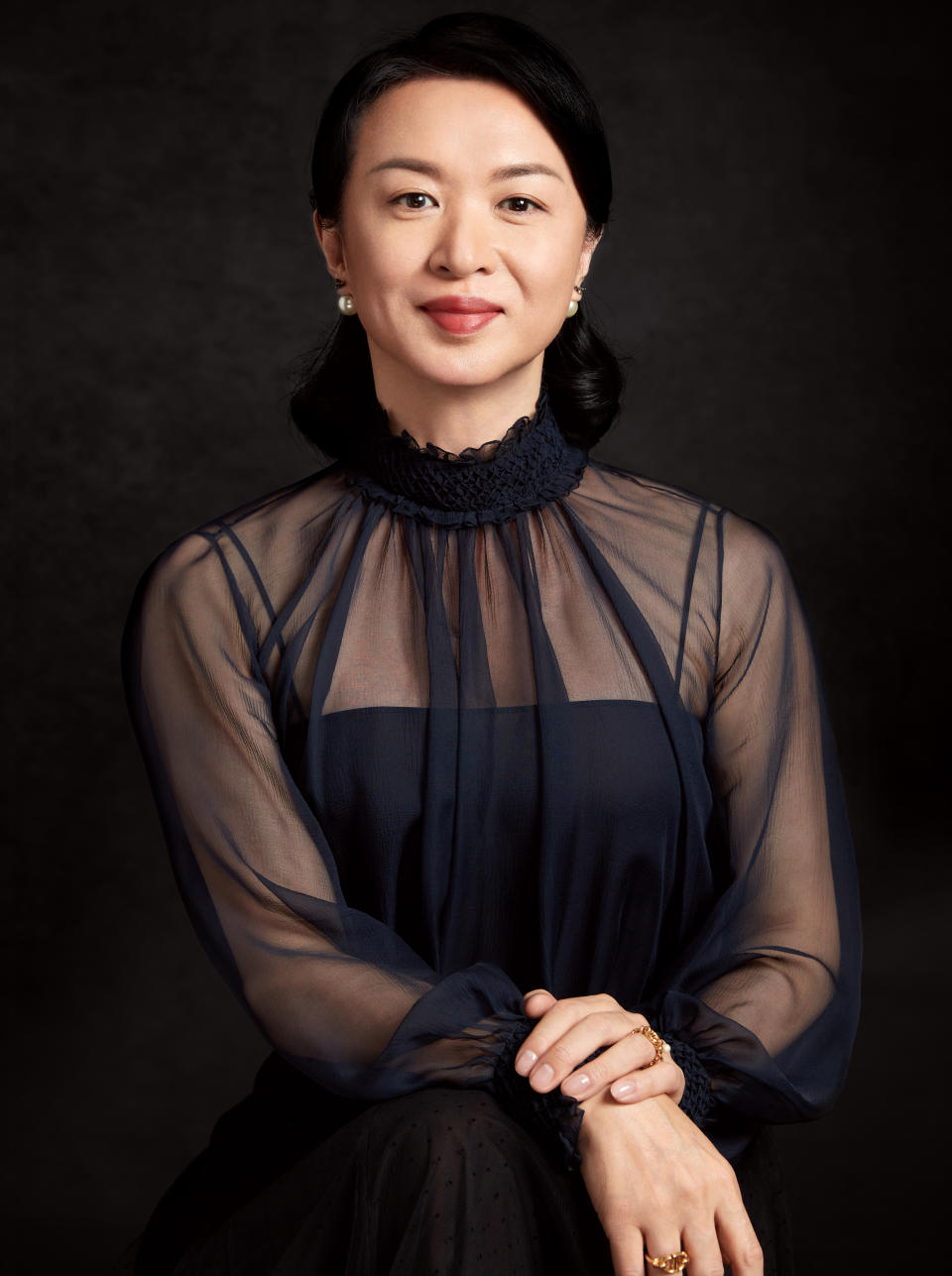5 Queer Ballet Icons to Recognize this Pride Month
As Pride Month, comes to a close, Milwaukee Ballet feels it is important to recognize and reflect on some of the strongest voices from dancers in the LGBTQ+ community. The history of ballet constantly intersects with the history of LGBTQ+ rights, creativity, and joy, and dance is an apt avenue through which to celebrate this slice of humanity.
Read below for five names to honor and recognize this June and beyond:
——————————————————————————————————————————————————————————————
Adriana Pierce
Adriana Pierce is a dancer, choreographer, and founder of Queer the Ballet— an initiative that prioritizes advancing queer artists and telling their stories.

Photo courtesy of adrianapierce.com
After training at the School of American Ballet and dancing professionally with New York City Ballet and Miami City Ballet, Pierce expanded her expertise onto Broadway, film, and TV. Recently, Pierce danced in Steven Spielberg’s West Side Story (2021) and the Broadway Revival of Carousel. Pierce is also a regular choreographer, having just finished work as Associate Director and Choreographer for Tony Award-winning Broadway show Illinoise. With her skill in dance and choreography, Pierce furthers her talents into activism as she makes her mark on LGBTQ+ representation by founding Queer the Ballet.
Queer the Ballet strives to feature dancers of all genders with equal agency, breaking stereotypes of traditional dynamics. Specifically, Pierce highlights that many classical ballets feature a male and a female dancer in a pas de deux with very specific expectations for each based on their gender—expectations she hopes to dismantle.
Pierce regularly breaks gender stereotypes in her showcases, including 2024’s “Dream of a Common Language” featuring former Milwaukee Ballet Leading Artist Annia Hidalgo. In an interview with NBC, Hidalgo explained that pointe shoes solidify gender stereotypes in dance, as they are typically reserved for women. In Pierce’s showcase, Hidalgo removed her pointe shoes and danced steps that were typically choreographed just for male dancers.
Pierce has also presented several showcases and short films about the isolation of queer women in ballet, as well as others about the deep roots of binary gender embedded into dance. She hopes to continue her fight in increasing visibility of queer dancers and offering them a platform to be authentic as people and ballet dancers.
Learn more about Queer the Ballet.
——————————————————————————————————————————————————————————————
Alvin Ailey
Choreographer, dancer, director, activist, and founder of the Alvin Ailey American Dance Theater, Alvin Ailey is one of the most iconic figures in modernizing ballet to spread awareness of Black life in America.

Alvin Ailey. Photo by Jack Mitchell. (©) Alvin Ailey Dance Foundation, Inc. and Smithsonian Institution
After growing up in the segregated south, Ailey first studied dance in high school, learning under Lester Horton at the Horton Dance Company. Here, Ailey learned a variety of styles, from Native American-inspired movement to classical ballet, which he would come to feature in his future works.
After Horton’s sudden death, Ailey took over as artistic director and choreographer for Horton Dance Company, during which time he expanded the company and gained a national audience through television programs. By 1954, Ailey starred in the Broadway show House of Flowers, initially choreographed by George Balanchine.
By 1958, Ailey founded the Alvin Ailey American Dance Theater (AAADT), a professional company designed to present Ailey’s vision of honoring Black culture through dance. Housed in New York, AAADT would come to hold iconic performances choreographed by Ailey, such as Revelations (one of the most performed modern ballets), Blues Suite, Creation of the World, and many more. The company toured internationally, being the first company to perform in the Soviet Union to nearly 22 million people watching on live TV. The audience loved the performance so much that the company gave over 30 curtain calls. Ailey also expanded the company into dance education, founding The Ailey School in 1969.
In December of 1989, Ailey passed away from an AIDS-related illness. His funeral was a grand display of his impact on the world, with speeches from Maya Angelou, George H.W. Bush, Max Roach, and many dancers from AAADT.
Ailey is memorialized as a queer and Black hero who expanded dance to the underserved and underrepresented. Posthumously, Ailey has received the Presidential Medal of Freedom from Barack Obama and was inducted to the Rainbow Honor Walk in San Francisco. Today, AAADT still is an active and beloved dance company that focuses on the advancement of Black culture and queer bodies in ballet and dance.
For more information on AAADT.
——————————————————————————————————————————————————————————————
Katy Pyle
Katy Pyle is a genderqueer trans ballet dancer and choreographer who founded the ballet company Ballez to break the history of patriarchy in ballet and to create space for LGBTQ+ dancers. Ballez regularly stages queer variations of famous ballets such as reworkings of The Firebird, Giselle, Coppélia, and The Sleeping Beauty.

Photo courtesy of ballez.org
Pyle studied and danced with the Texas Youth Ballet, Austin Contemporary Ballet, and the North Carolina School of the Arts. After graduating college, they performed as a drag king and began choreographing for dancers and companies in the New York City area. Moving to Brooklyn in 2011, Pyle founded Ballez and regularly teaches ballet to audiences across America.
Pyle continues to stage and teach a modern version of ballet that is gender inclusive and focuses on the skills of a dancer rather than the expectations of a dancer’s gender. Pyle currently teaches at the Eugene Lang College of Liberal Arts and continues to be a guest choreographer and guest artist across the country.
Learn more about Ballez
——————————————————————————————————————————————————————————————
Noel Tovey
Australia’s first male ballet dancer of Indigenous heritage, Noel Tovey began his career as a ballet dancer and grew into a LGBTQ+ rights activist and a renowned choreographer.

Photo courtesy of qnews.com
Coming from a poor family in Australia, Tovey was first inspired to enter the arts after seeing Les Sylphides at the National Theatre in Melbourne. Taking classes at the National Theatre Ballet School, Tovey studied with Madame Borovansky and danced as an extra with the Borovansky Ballet. He then moved to London in the 1960s where he became a principal dancer with Sadler’s Wells Opera and made his West End debut, eventually teaching dance at the Royal Academy of Dramatic Art. Tovey also choreographed and appeared in several West End productions, including the drag revue Birds of a Feather and the world premiere of Oh! Calcutta!
Tovey was equally as involved in his activism as he was in his artistry. In 1969, Tovey attended Judy Garland’s funeral in New York and protested alongside many LGBTQ+ activists at the Stonewall Riots. Returning to London, Tovey campaigned for LGBTQ+ rights and even assisted in organizing the first pride march in London. He continued these campaigns after returning to Australia, aiding in erasing the illegality of the ‘crime of homosexuality’ in Victorian laws. For these efforts, he was awarded with the AM (Member of the Order of Australia).
Tovey continued his activism for Aboriginal dancers throughout his career as a choreographer. After directing an all-Indigenous cast of A Midsummer Night’s Dream, Tovey was appointed as the artistic director for the Indigenous welcoming at the Opening Ceremony of the 2000 Sydney Olympics.
Tovey continues to support Indigenous and queer performing artists and has left a massive mark on the history of LGBTQ+ and Indigenous rights through his career as ballet dancer, choreographer, and activist.
——————————————————————————————————————————————————————————————
Jin Xing
Born in Shenyang China, Jin Xing is a dancer, choreographer, actress, talk show host, and one of the few transgender public figures in China. From dancing ballet to being known as the “Oprah of China,” Xing highlights that gender expression and dance can work hand in hand.
Image courtesy of yahoo life
Xing first studied dance with the People’s Liberation Army at the age of nine, and by twelve transferred to the People’s Liberation Army Art Academy. After graduating, Xing danced with the Shenyang military dance troupe and won a national dance competition with a Central Asian ethnic dance performance. By 1989, she moved to New York to study modern dance under Merce Cunningham and Martha Graham.
Xing embarked on a world tour after her studies in New York, and by 1995 received sex reassignment surgery in China— one of the first ‘officially recognized’ by the country. While in China, she founded the Jin Xing Dance Theatre, which hosts their own dance company and puts on regular performances of new and innovative choreography ranging from ballet to modern dance to traditional Chinese.
Her popularity did not end in the world of dance—she is often referred to as the “Oprah of China” for her successful career as a talk show host. Starting as judge on a local version of So You Think You Can Dance, she quickly grew popular for her harsh criticism that made the show popular (giving her the name Poison Tongue on social media). From there, Xing went on to host The Jin Xing Show, which became a successful variety show that earns an estimated 100 million viewers every week.
While this list only scratches the surface of LGBTQ+ icons who have made an impact on the world of dance and ballet, we encourage you to honor these individuals—as well as the thousands more who have and are currently uplifting the community—this Pride Month and always.

